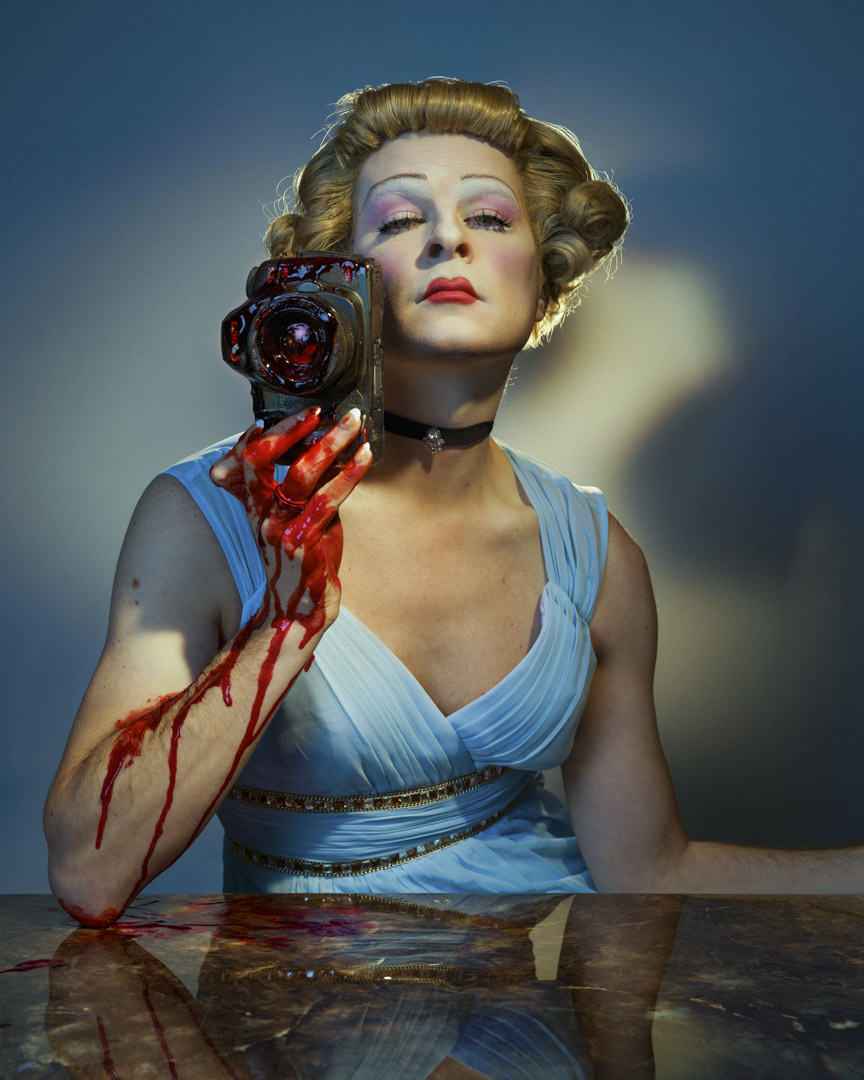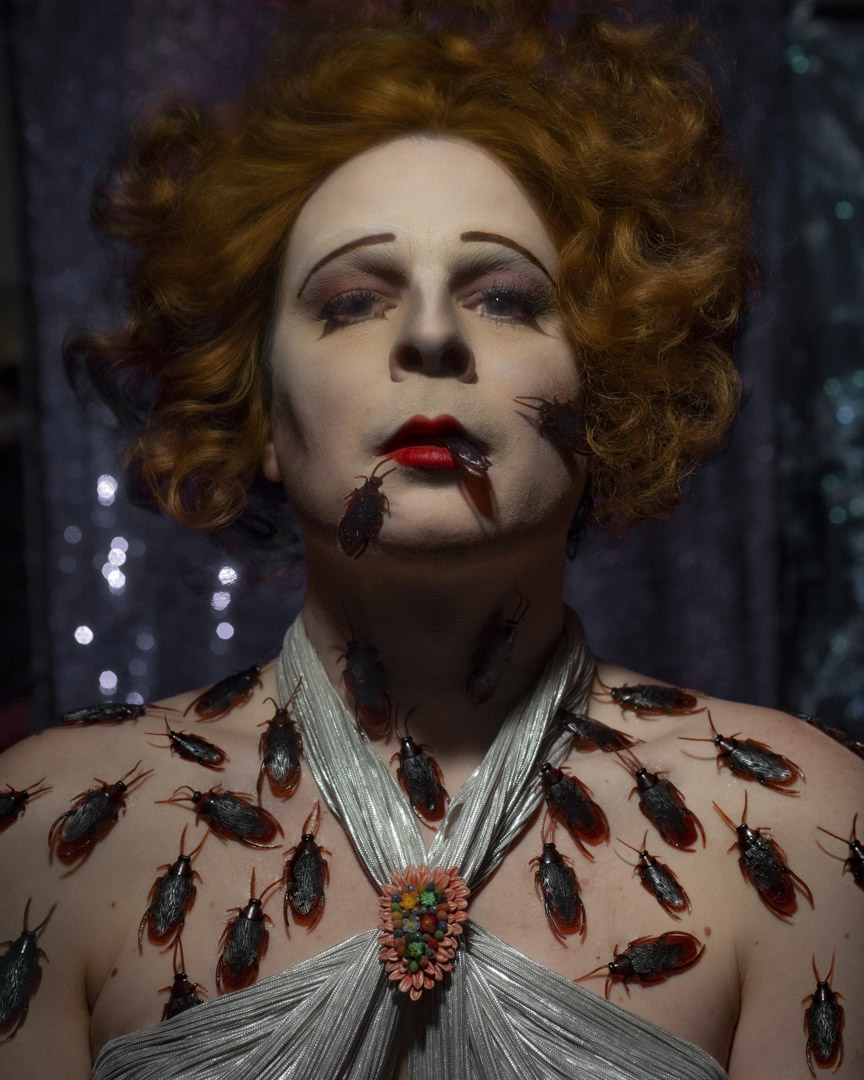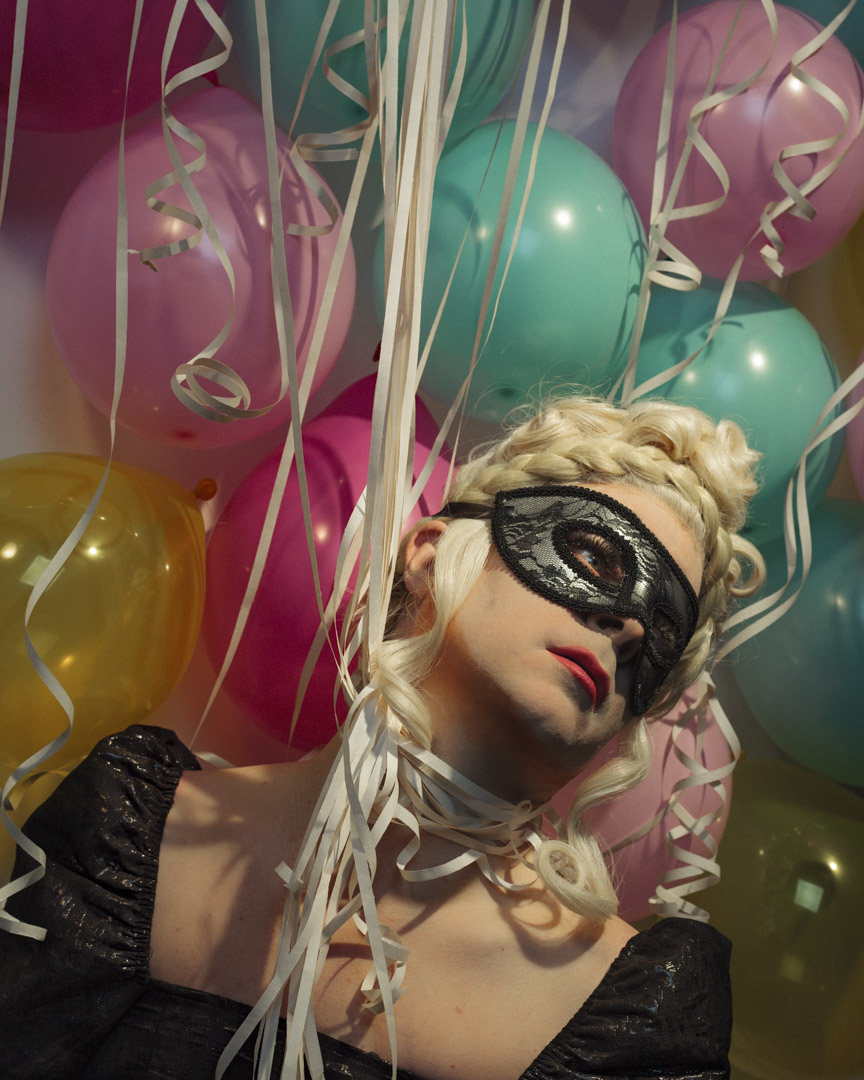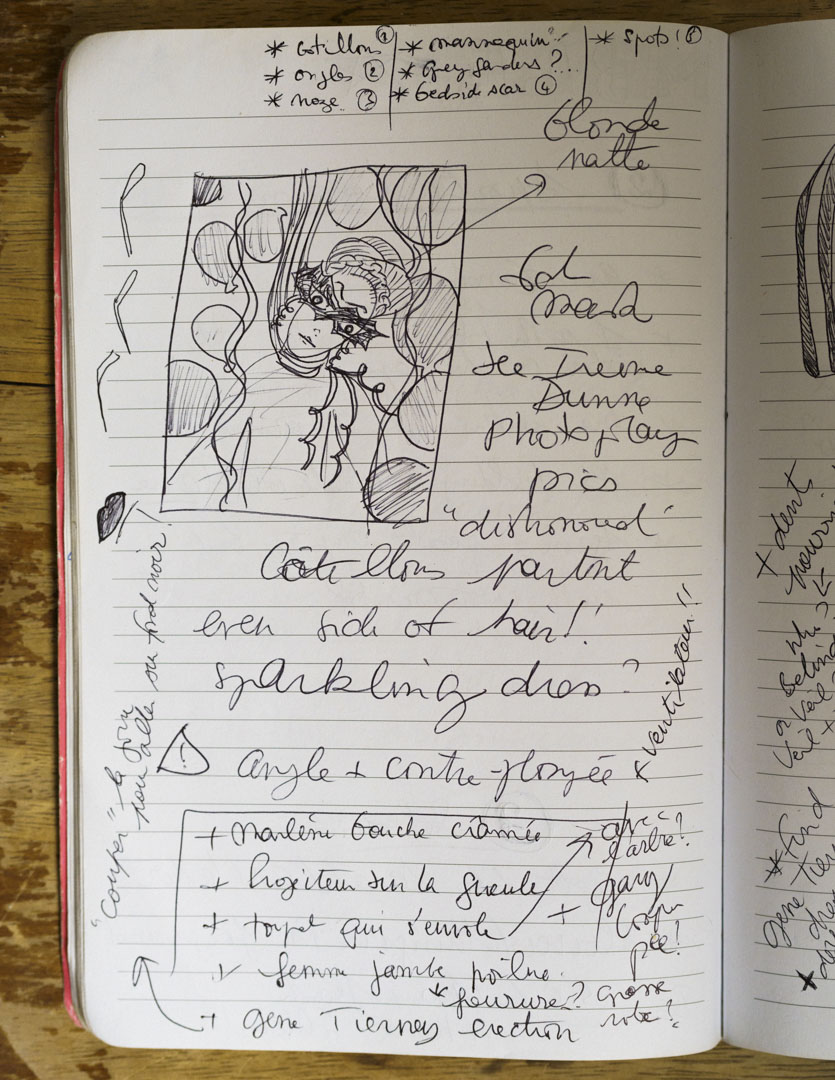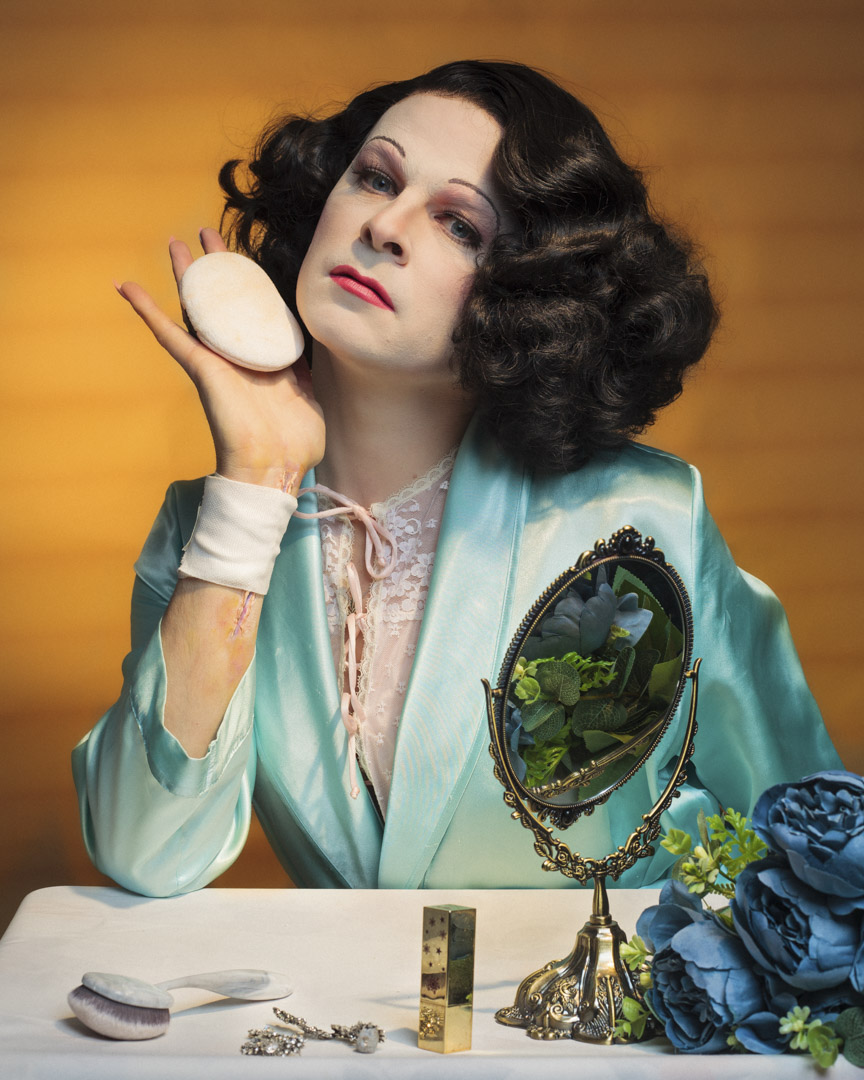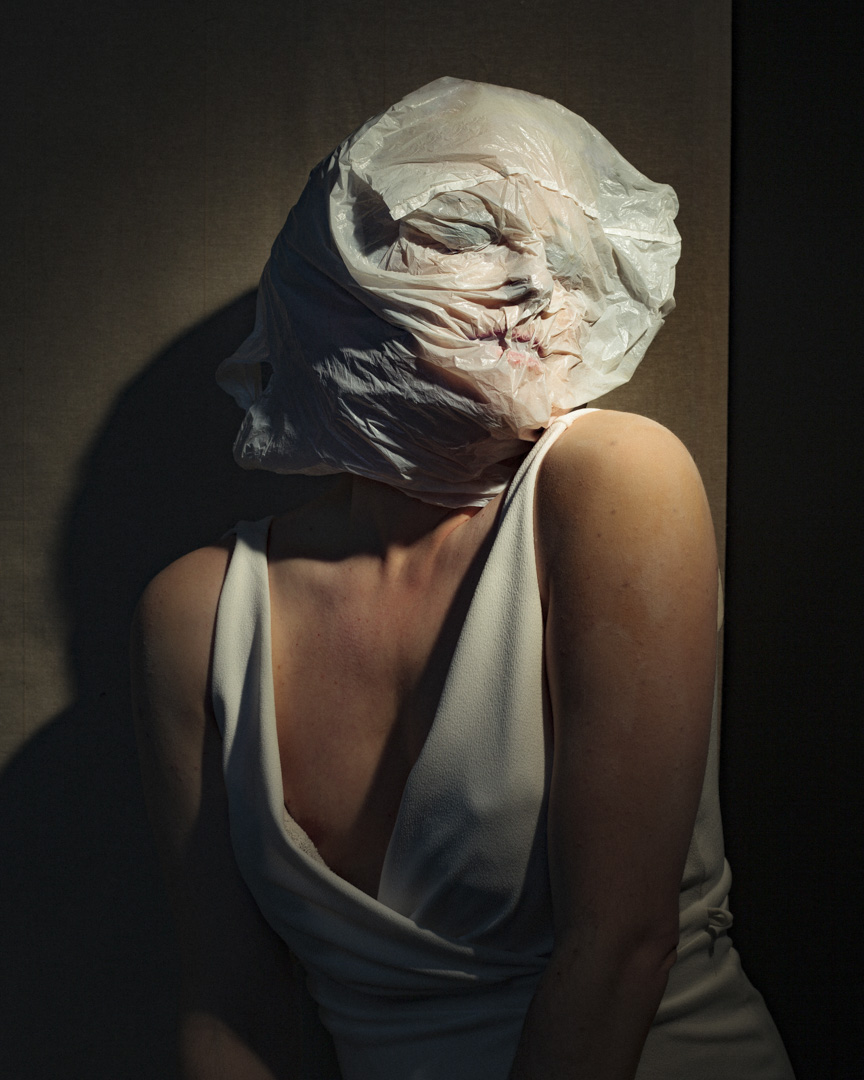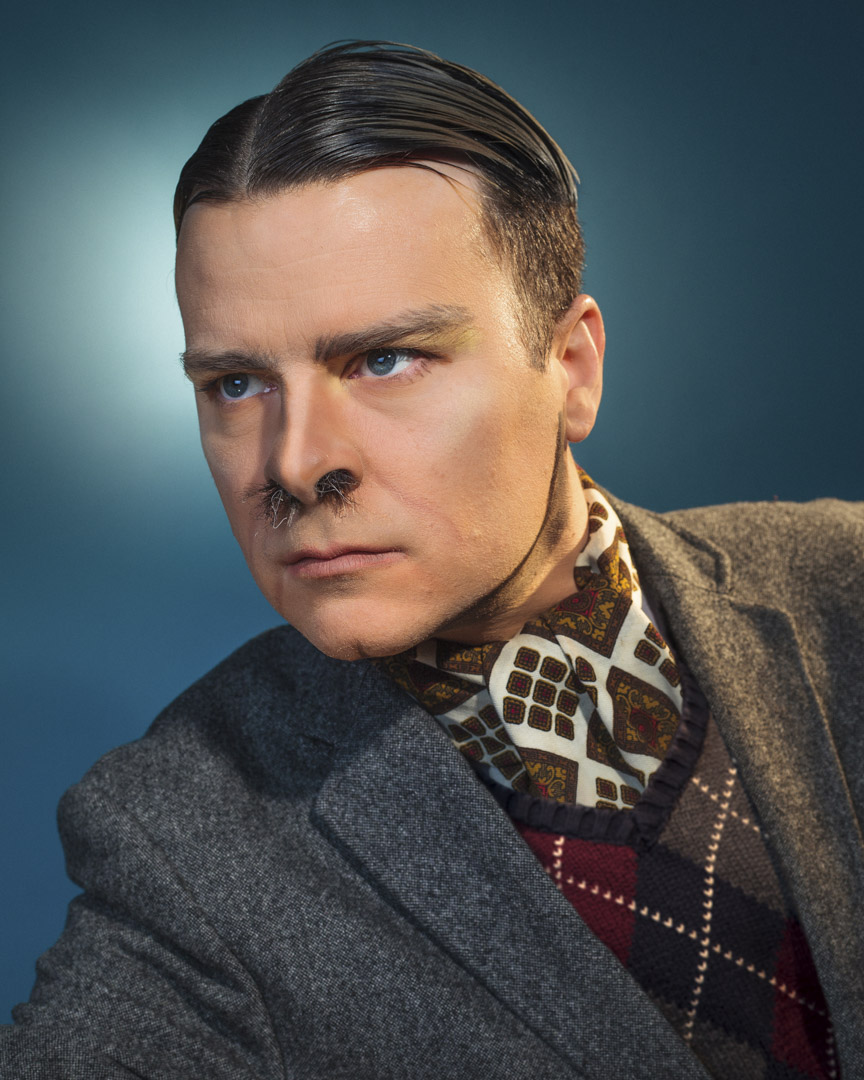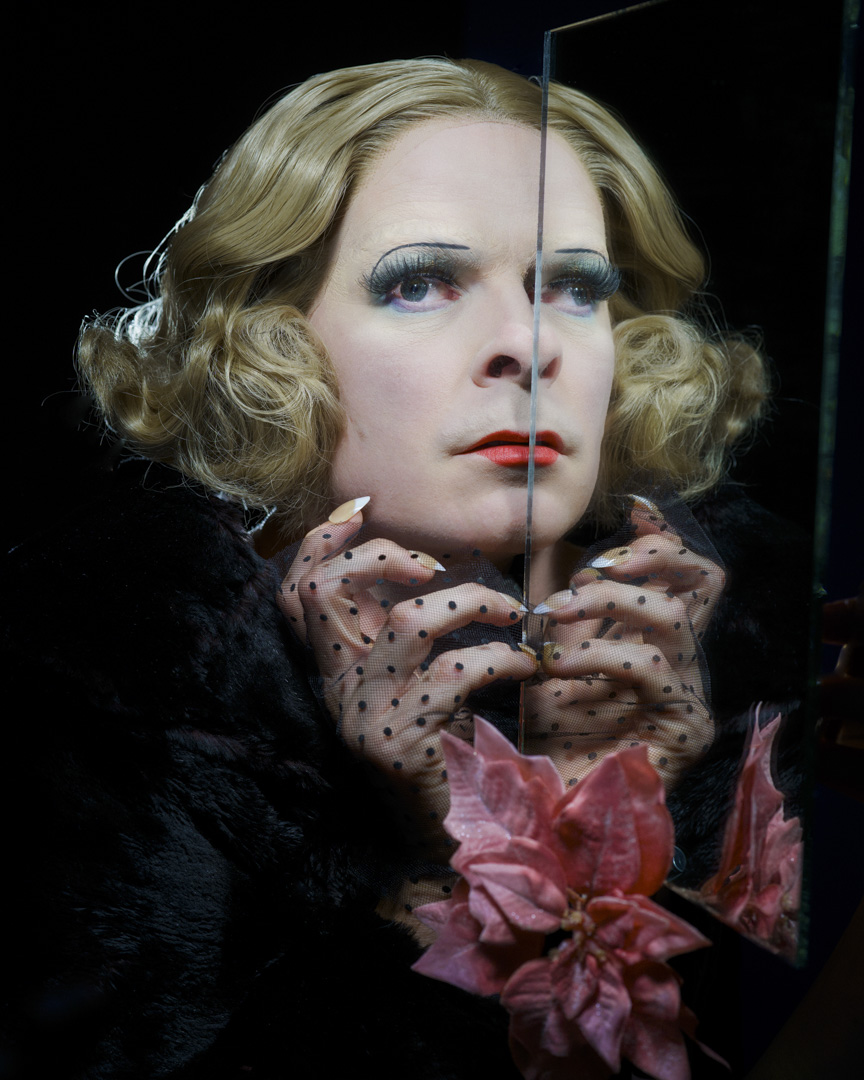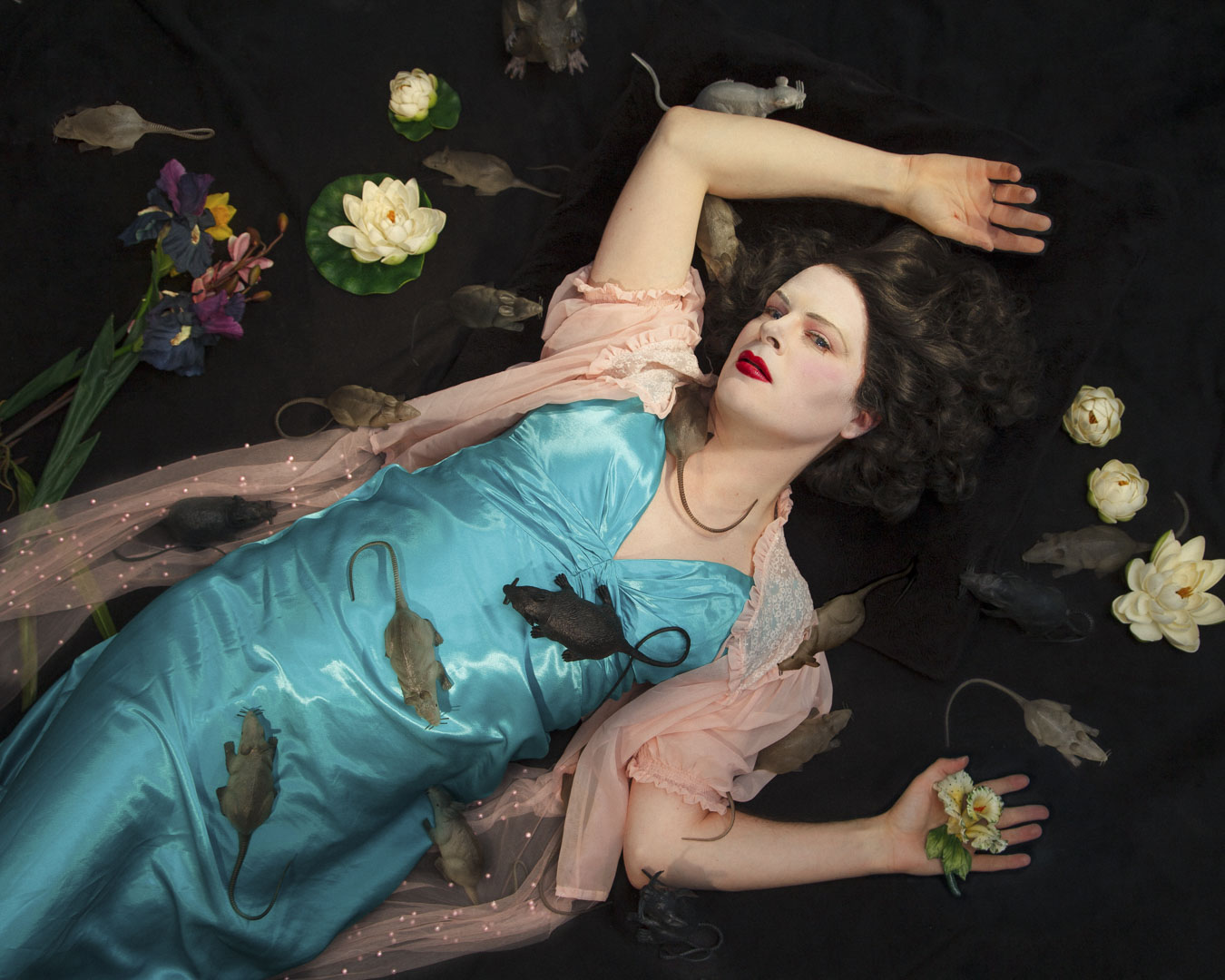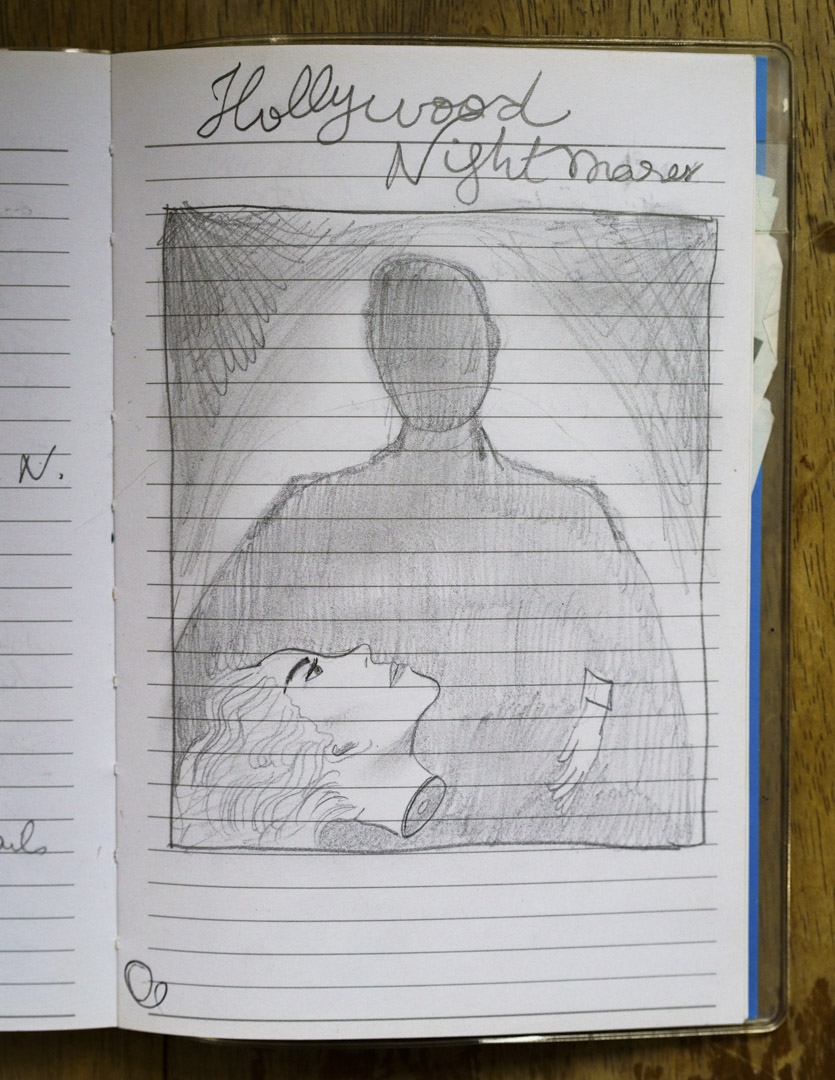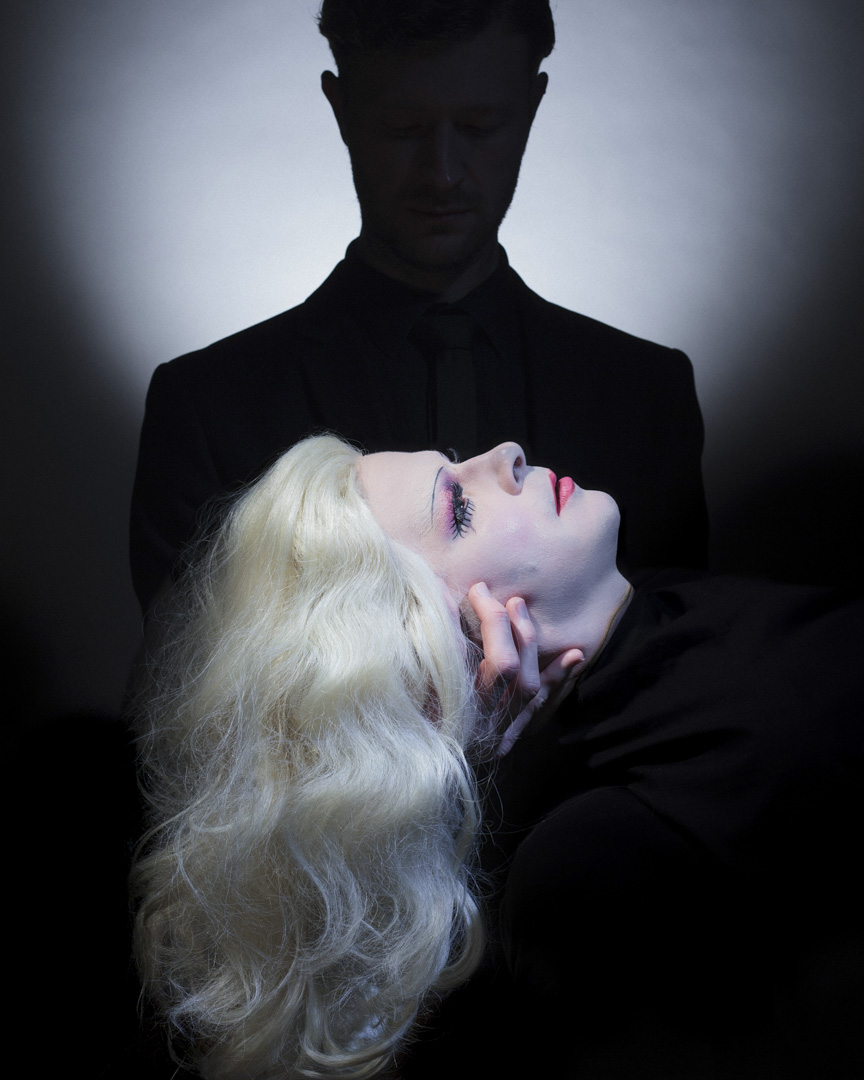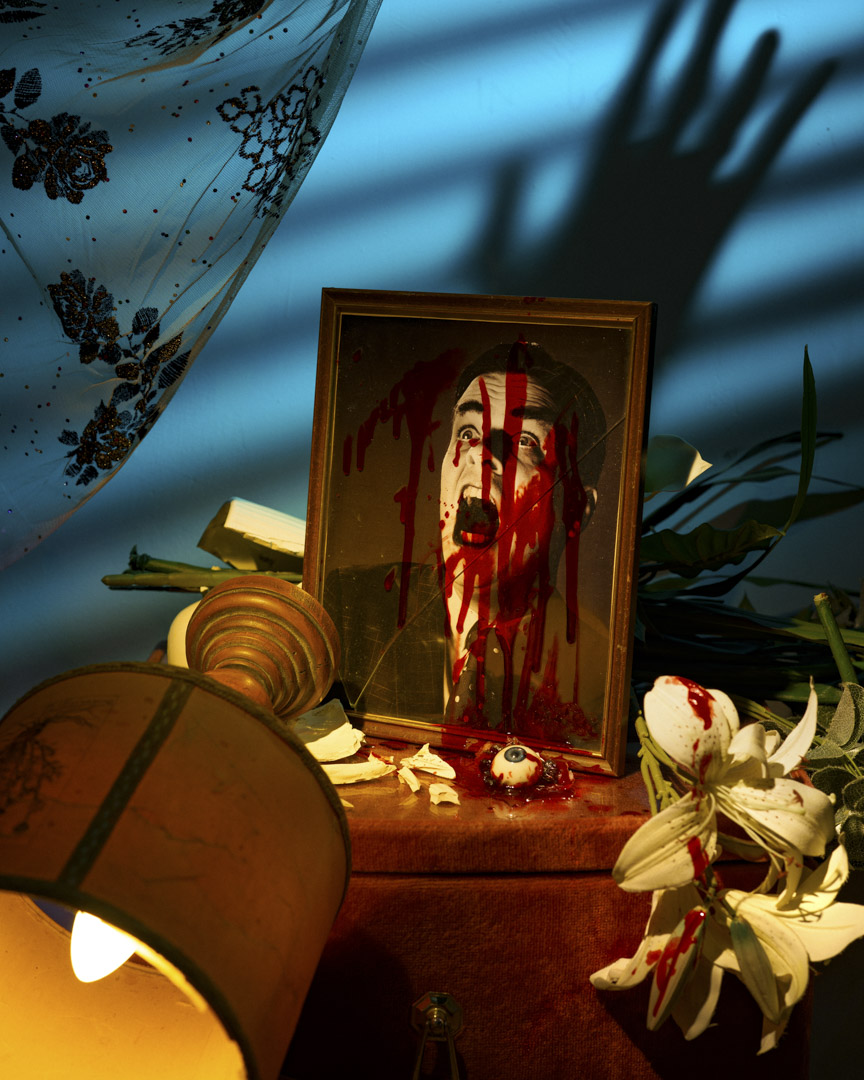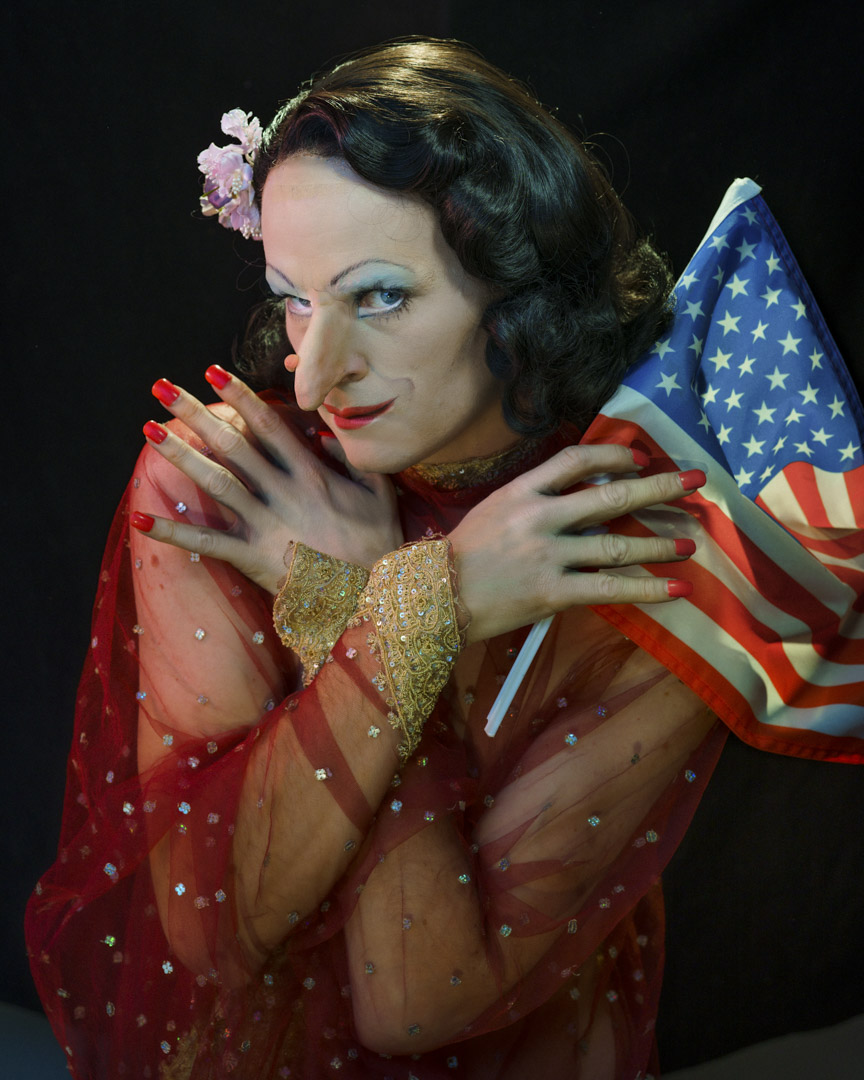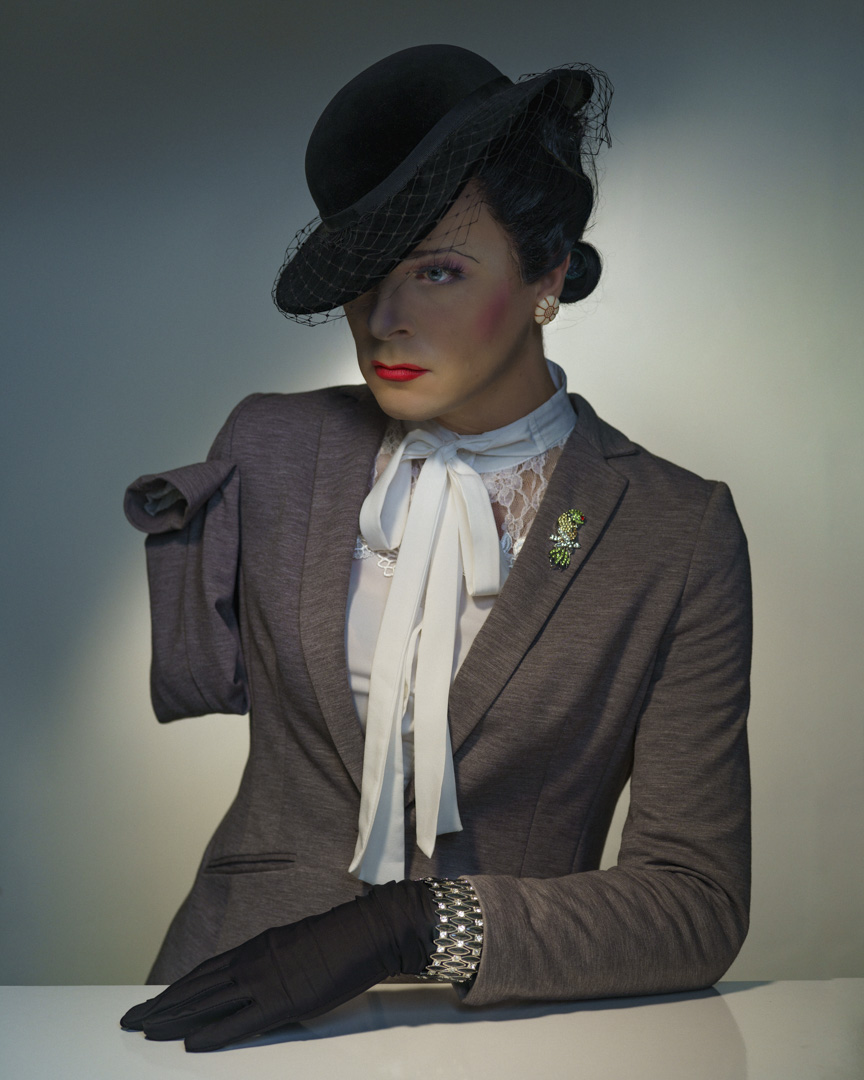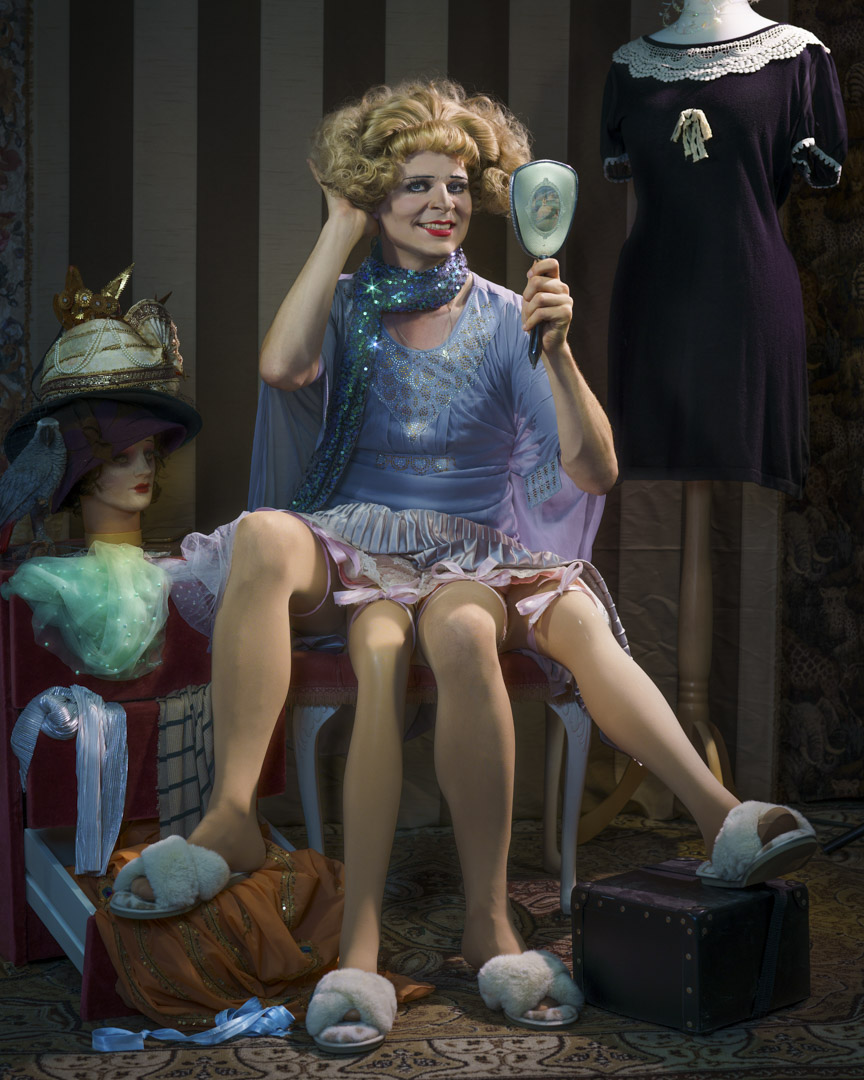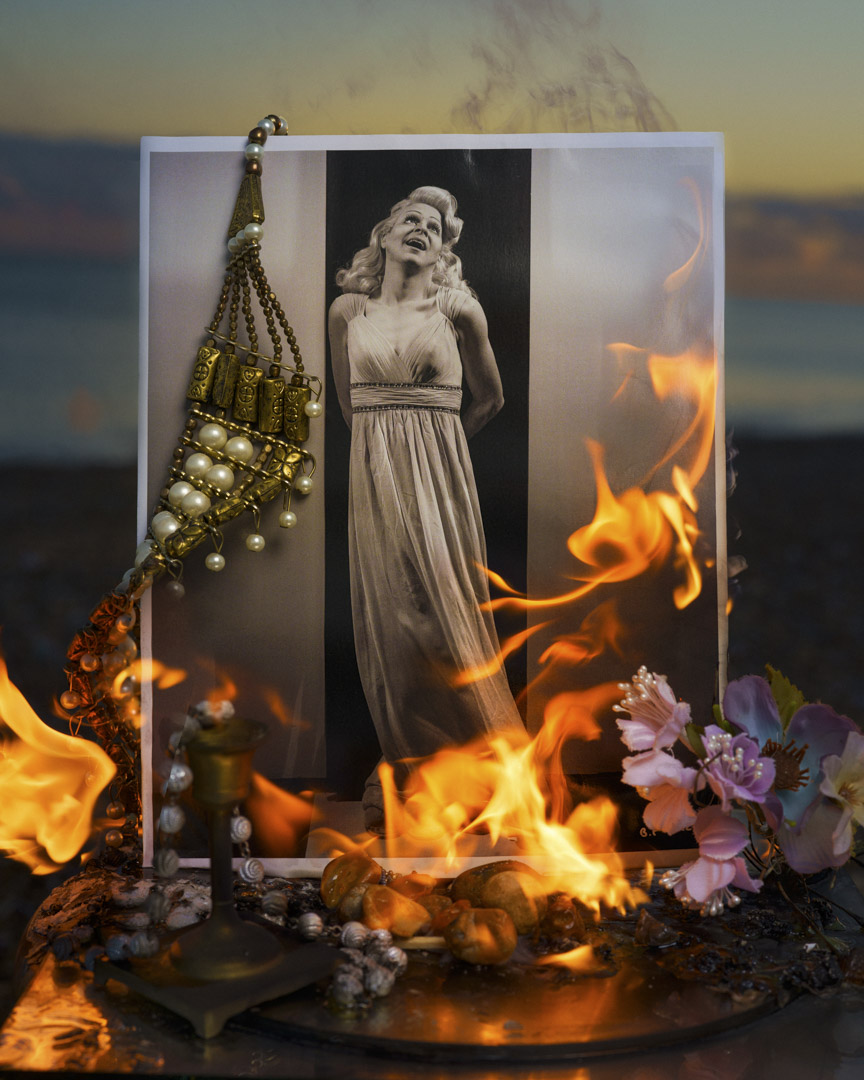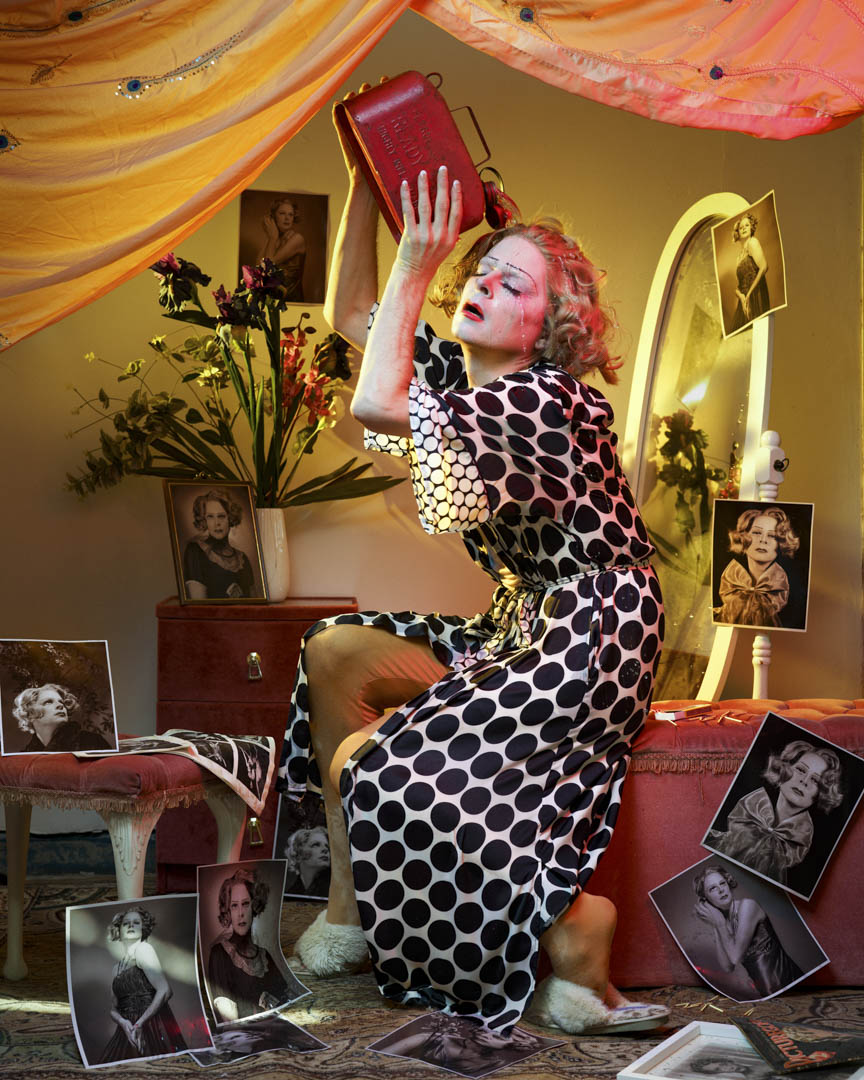Hollywood Nightmares, 2024
Hollywood Nightmares is a series of self-portraits by photographer Raphaël Neal, inspired by the portrait aesthetics of the stars of the golden age of cinema (from the 1930s to the 1950s).
Yet these photographs are disturbing. Staged with masterful attention to detail, they are embellished with touches of gore. In these scabrous situations, the characters don’t seem to care. Pain is denied. Horror is normal – including that denounced since the beginning of the #metoo wave.
This work is part of an attempt to come to terms with the passage of time and the loss of what seemed eternal and pure – an ideal vision of cinema – while at the same time looking for signs of light in the fracas.
‘This self-portrait pays tribute to Ida Lupino, a fantastic British actress who was also a director in Hollywood in the 1940s. In 1949, she co-wrote and co-directed a brave movie about a young unmarried mother, Not Wanted. A few months before I took this, my beloved Canon camera unexpectedly died during a shoot. It deeply affected me, for I had used it for a whole decade, including as the main camera on my first feature film, Fever, shot in France. I wanted to do one last “portrait” of it’
‘What I love about old Hollywood portraits is their aesthetics. The stars were presented the way religious icons used to be painted and sculpted, since cinema appeared around the time the church was losing its influence. In this, I wanted to depict a character who keeps the pose despite having blood on his hands, as if unaware or in denial. The light behind him is a way of suggesting that the system is encouraging him, maybe even glorifying him’
‘Another look at Hollywood’s contradictions: the softness of the aesthetics (a misty effect I got with blowing on the lens) and the nightmares that take place behind the scenes, especially for women. For instance, Tippi Hedren in The Birds or Marnie’
‘This is a homage to a beautiful 1940s Kodachrome photograph of Gene Tierney. She was a femme fatale who started acting very young, despite problems she had with her mental health. Tierney struggled with intense episodes of depression and anxiety, during which she sometimes had hallucinations. This inspired me to portray her as an Ophelia-esque creature being asked to keep still while hallucinating rats all around her. She was one of the very first people in showbusiness to talk openly about depression and mental illness’
‘I imagine some of my characters as victims who arrived at the top with dirty hands, losing themselves in an illusion of grandeur created by the industry’s most cynical producers’
This was inspired by pioneering female photographer Lee Miller, who was a model before becoming a fashion, art and documentary photographer. I particularly like the fashion shots she made during the second world war, which showed life in Britain from the woman’s side.
‘This is one of the rare pictures in the series that doesn’t involve an actor. It represents a fan, an admirer, something stardom can’t really work without. I wanted the photo to look both peaceful and uncanny, through details like the vase on the table. Behind the character, I’ve put up old photos from my collection. But I’ve also added some of my own recent pictures. I like this confusion: real and fake are entwined in a quiet madness’
‘This photo was a way for me to go back to the beginning of cinema, when movies were shown in fairs and circuses. They allowed the audience to travel through an exciting and nightmarish world, discovering beauty and monstrosity.’
